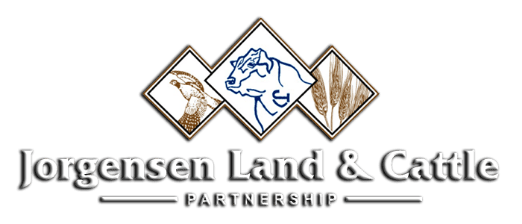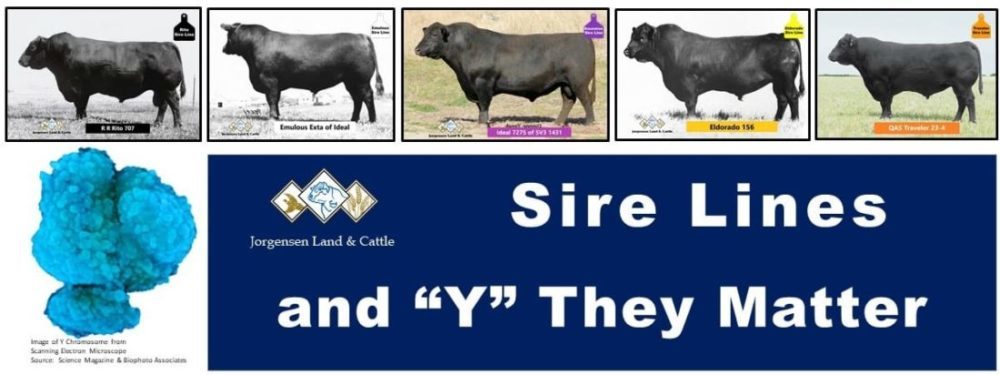In Part 1 of our blog series on Sire Lines, we established the biological basis of the “Y chromosome”, what the Y chromosome does, and why it matters. You can find Part 1 by clicking this link:
https://jorgensenfarms.com/sire-lines-and-y-they-matter/.
Now, we continue our look at Sire Lines and “Y” They Matter. Today, we have a lot of people multiplying Angus cattle; people chasing numbers, fads, and the ‘Popular Sire of the Month.’ My thoughts on true beef cattle breeders is that they are operations with a true breeding program; by that, I mean that they have direction for where they want to take their herd, what they want to produce, and what they want their seedstock cattle to produce.
A program like that knows where their cattle came from (Sire Lines and Cow Families) and what genetic contributions their lines bring to the table.
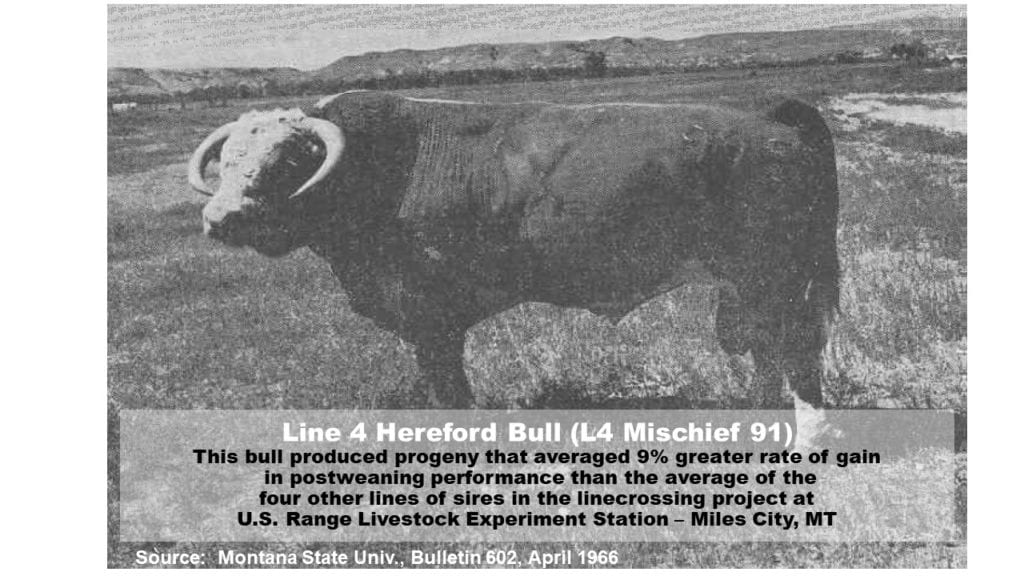
Part 2: Learning from the Past: Hereford & Angus Sire Line Lessons
Some of the best work done with genetic lines has been done with seed corn and with Herefords.
Chances are that you have heard of Line 1 Hereford cattle, but you may not have heard of Line 2, Line 3, Line 4, Line 5, Line 6, … all the way through Line 14. All of those were sire lines of Herefords that were developed at the U.S. Range Livestock Experiment Station in Miles City, MT.
The idea behind the Hereford linebreeding project at Miles City was to see if it was possible to create separate inbred lines of cattle that could then be crossed to generate results similar to the progress made through Hybrid Seed Corn breeding.
Lesson 1: Some lines deserve to be abandoned. In total, 11 separate lines and three more synthetic lines were initiated at Miles City; one initial line was quickly discarded because of bloat & low weaning weights, an additional initial line was abandoned because of chronic bloat, another initial line was abandoned due to poor performance, and a fourth line was discarded due to poor performance and low fertility. It is easy to brag on people with great determination who stick to their ideas, but we need to remember that our goal should be to improve our herd. Our goal should not be to continue a line, especially one that that has serious defects; we must be willing to cull the animals that will keep us from moving our herds toward our well-defined goals.
A linebred herd is only as good as: (a) the individuals that you choose to build the herd around, and (2) the honest selection process implemented by the breeder. Stated more simply, (1) “Garbage in yields garbage out” and (2) “If you ignore significant weaknesses when selecting breeding stock, you will allow those weaknesses to become established throughout your herd.”
It is helpful to select your breeding stock from someone who has run a true breeding program with consistent objectives and who has done so for multiple generations. A breeder who has done that will have suffered the expense & timely process of eliminating many cattle (sometimes entire lines) and will have improved the remaining herd. Selecting breeding stock from a good breeding program with common goals enables you to make quicker progress in building a herd because you start from a higher point.
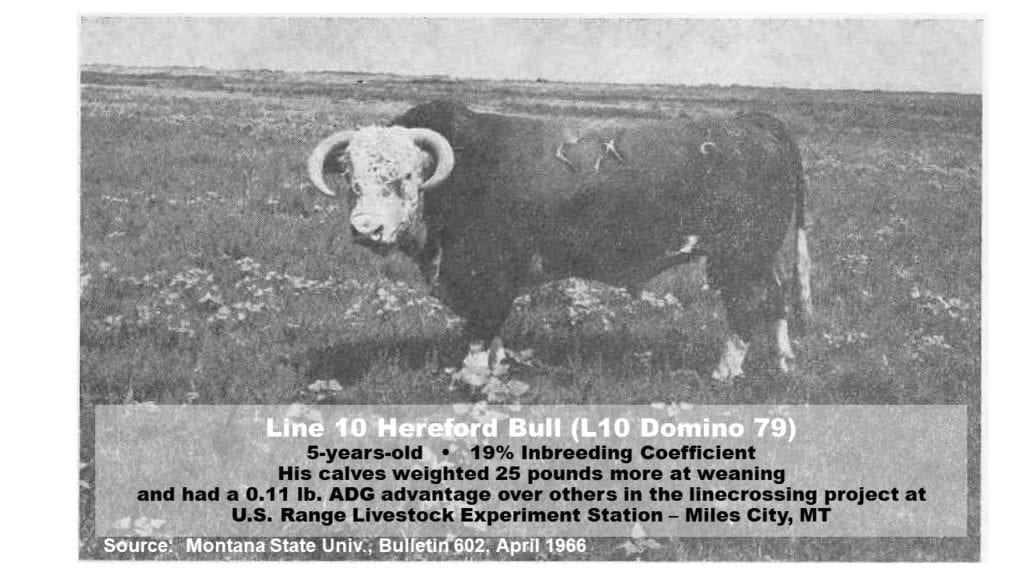
Lesson 2: “Vision”, “Accurate Measurement”, and “Consistent, Rigid Selection” make a powerful team for creating a great herd or sire line.
A very good friend of mine is famous for saying, “People generally wind-up somewhere between where they start and where they are looking.” It is hard to build a barn or a herd if you don’t know what you want either of those to look like when you’re done. It’s also hard to build either of them if you keep getting distracted & keep switching your plans or building materials.
We need to accurately & consistently measure performance in our herd, and then select the animals that move us closer to our goals. If you have an image in your head or on paper of what you want your herd to be, then breeding decisions become easier. Those decisions will either move you closer to that image or lead you away from it. Making consistent selection decisions that move you toward that image (not away from it) allow you to keep your herd marching toward your goals.

She is a product of 13 generations of Jorgensen breeding & selection.
Lesson 3: Linebreeding doesn’t mean poor fertility.
Let’s squash this major myth about linebreeding and poor fertility. The myth is, “The first thing to go when you linebreed will be fertility.“ Remember, linebreeding concentrates genes that are there – good & bad. If key ancestors in a line are poor for fertility, then there is a strong possibility that the line will be poor for fertility; select your breeding stock carefully that you are adding to your herd. While there are lines of livestock that are known for poor fertility, there are also lines of livestock (swine, for instance) that were developed for documented superior fertility. There are lines of poultry that were developed for superior fertility, as well. Only one of the four Hereford lines that was discarded in Miles City was discarded for poor fertility. In Part 1 of our Sire Line blog, we told of research in Holsteins that indicates some sire lines are likely to be superior (and some inferior) for reproductive traits in bulls due to regions of the Y chromosome. We need to carefully research our source for breeding stock before adding it to our herd.
We know that it is not easy to select for fertility because the genetics component is so hard to separate from environmental & management variation, but we have been selecting for fertility for the past 60+ years at Jorgensen Land & Cattle. Now, with help of DNA technologies and consistent breeding & selection we think that we can continue to make progress in that area within our herd, and at a faster rate than before.
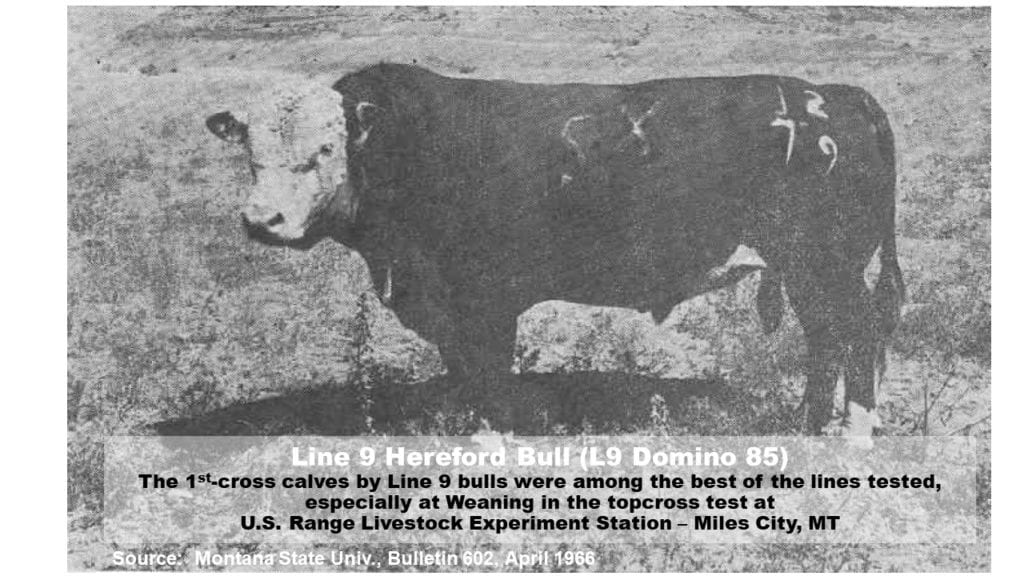
Lesson 4: You don’t have to use a separate breed to get benefits of hybrid vigor. Selecting and using separate sire lines can yield improved performance, even in a herd of only one breed – whether you are commercial or purebred.
Line 9 Herefords present a great learning opportunity for us. Even though straight Line 9 cattle did not exhibit the best performance among the lines at Miles City, they demonstrated superior crossing ability when used on other lines at both the Miles City Experiment Station and in Arizona on the San Carolos Apache Hereford herd. The work in Montana and in Arizona demonstrated that using a different sire line on relatively unrelated Hereford cattle generated Hybrid vigor – even within the same breed.
While we certainly know that crossing cattle of different breeds produces excellent hybrid vigor, the work at Miles City and in Arizona demonstrated that we can produce hybrid vigor within a single breed of beef cattle by crossing sire lines that are relatively unrelated – and reap the rewards without having to give-up the benefits that may come from sticking to a British-based herd (Angus/Hereford) or a herd of straight Angus cattle.
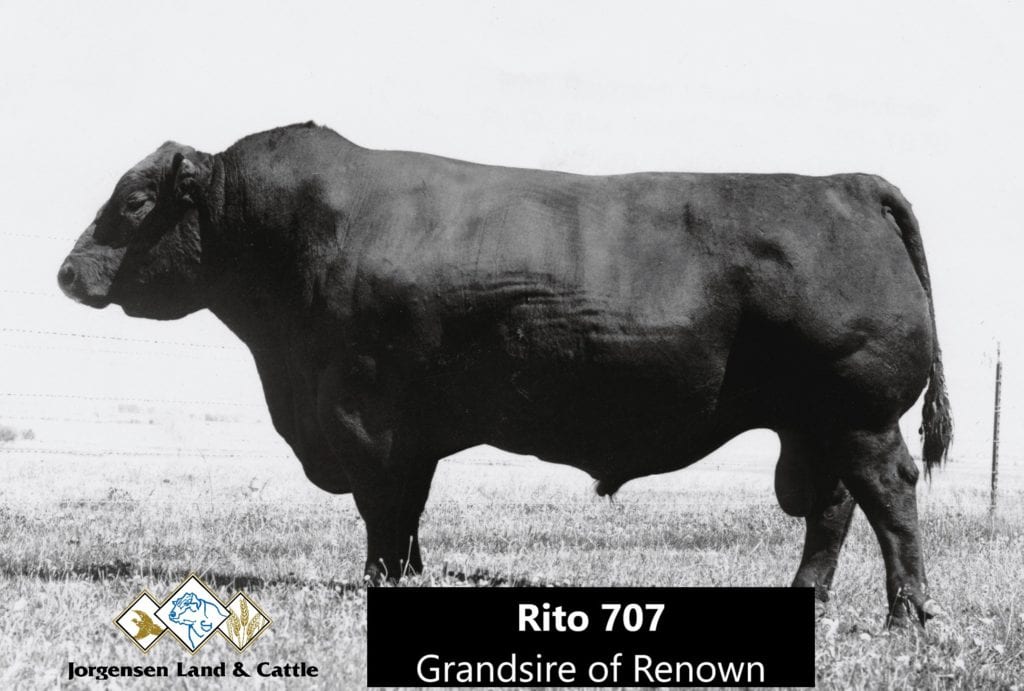
“Rito 7075” demonstrated this same effect in the Schaff Angus Valley (SAV) herd, beginning with their 2009 calf crop where his calves displayed the muscle, Rito masculinity, and capacity for which the line is known. The Rito 7075 calves were the heaviest weaning weight and yearling weight sire group of the 2009 calf crop. The Rito sire line crossed extremely well on the SAV cows and created a dynasty through bulls such as: SAV 707 Rito 9969, SAV Eliminator 9105, SAV Resource 1441, SAV Renown 3439, and others.

Note that we do not mean to imply that the Rito line needs to be a complete outcross to be effective; far from it. SAV Resource 1441, the top growth bull of his era, was far from a complete outcross. While his Jorgensen bred sire (Rito 707 of Ideal 3407 7075) was sired by RR Rito 707 and traced 37 times to Rito 707, his dam traced to RR Rito 707 an additional 22 times. In total, SAV Resource had 212 Jorgensen bred or owned ancestors, and through linebreeding and A.I. they make-up 583 of the genetic building blocks of his foundation.
We do not claim that crossing different Angus sire lines will create as much hybrid vigor as crossing different breeds, but incorporating relatively separate & distinct lines is certainly an option that can help you meet the goals for your herd without having to give up the maternal benefits an Angus sire … and we can make that simple for you.
Contact us to talk about helping you simplify your breeding program through our distinct sire lines. 1-800-548-BULL (2855)
In the next episode (Part 3) of “Sire Lines & Y They Matter” we will go further in-depth on Angus sire lines, document when they divided, and talk about their attributes, and how generations of breeders have used these lines, and crossed these lines successfully.
I promise that it won’t read like the section of that Bible that starts with, “Eleazar begat Phinehas, Phinehas begat Abishua, and Abishua begat …”
Thank you for your interest in this blog series and we welcome you to relay your thoughts, questions and your own observations related to this and other topics that you would like to see us address. Please email those to [email protected] . Also, if you are interested in reference materials from this series, please ask.
For a brief review of our sire lines and what they impart to our breeding program, we welcome you to follow this link to the Jorgensen Sires Lines page of our website.
© 2020 Jorgensen Land & Cattle
